INTERNACIONAL
Battle for biblical archaeology intensifies as Israeli researchers face academic boycott
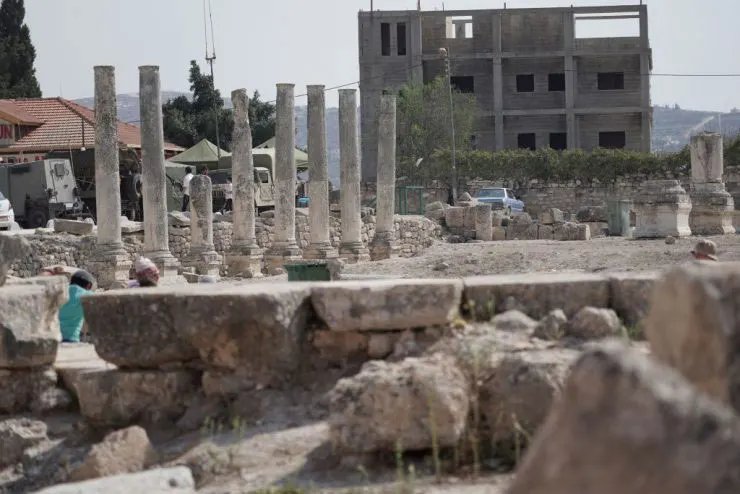
TEL AVIV – A leading archaeology journal has effectively barred submissions by Israelis on Judea and Samaria unless they «have cooperated with the relevant Palestinian authorities,» in what analysts say is a microcosm of the harm caused by a global campaign to whitewash the Jewish people’s history in the Land of Israel.
According to a report recently published by The Press Service of Israel (TPS-IL), the Palestine Exploration Quarterly (PEQ)—a peer-reviewed journal of the London-based Palestine Exploration Fund (PEF)—is refusing to accept submissions from researchers affiliated with institutions operating in what it refers to as «occupied territory,» citing concerns over alleged Israeli violations of international law.
«Publication in PEQ is guided by the PEF’s ethical policy. The main aspect of this is international law, by which many academic institutions and publications, including PEQ, are bound,» Charlotte Whiting, the journal’s editor-in-chief, told TPS-IL.
The journal’s website states that it «does not collaborate with institutions founded by an occupying power based in any occupied territory, and will not support, encourage, fund, or publish research by any academic associated with such institutions.»
LEADING EVANGELICALS IN PUSH TO HAVE PRESIDENT TRUMP RECOGNIZE ISRAELI SOVEREIGNTY OVER ‘BIBLICAL HEARTLAND’
Excavations at Tel Shiloh, best known as the location where the Tabernacle stood before King Solomon built the First Temple. (Shlomo Matityahu/TPS-IL)
Israeli archaeologists told TPS-IL that any cooperation with Palestinian authorities or colleagues was practically impossible, because they «would be treated as traitors for this.» They also said that their work is in many instances shunned by the broader academic world and, as such, researchers are forgoing focus on the biblically significant areas of Judea and Samaria (West Bank) to protect their careers.
«What we’re seeing is a deliberate attempt to undermine Jewish historical ties to the land,» Yishai Fleisher, international spokesman for Hebron, the cradle of Jewish civilization located in Judea, told Fox News Digital. «There are three strategies at play: the Palestinians either acknowledge Jews were once here but argue they no longer belong, deny any Jewish connection at all, or destroy the evidence outright.»
Fleisher noted ongoing efforts by Palestinian authorities and others to rename historical Jewish sites. «They call Hebron ‘Al-Khalil,’ and the Cave of the Patriarchs becomes the ‘Ibrahimi Mosque.’ The Temple Mount is now the ‘Al-Aqsa complex,’ and Rachel’s Tomb has been rebranded as the ‘Bilal Bin Rabah Mosque,’» he said.
To counter this, he says Israeli advocates are working to mark and preserve ancient Jewish landmarks. «We added an Israeli flag and a menorah to a building originally constructed by King Herod 2,000 years ago—which itself stands atop a tomb dating back 3,500 years—to make it unmistakably clear it’s a Jewish site, despite the later addition of three minarets by Muslim conquerors.»
The Palestinian Authority, which gained non-member observer state status at the United Nations in 2012, has been spearheading the campaign to rewrite history in global forums that contain automatic anti-Israel majorities.

Visitors arrive at Sebastia National Park in Samaria. Sebastia was the Israelite kingdom during the reigns of Omri and Ahab. (Hillel Maeir/TPS-IL)
Among them is the United Nations Educational, Scientific and Cultural Organization (UNESCO), which in 2016 registered the Cave of the Patriarchs—the resting place of Abraham, Isaac, Jacob and their wives Sarah, Rebecca, and Leah located in Hebron—in the name of the «State of Palestine» on its «List of World Heritage in Danger.» More recently, UNESCO, in September 2023, named the Tell es-Sultan site near Jericho, which contains ruins dating back to the ninth millennium BCE, including evidence of one of humanity’s first-known villages, as a «World Heritage Site in Palestine.»
In December 2021, the United Nations General Assembly passed a non-binding resolution referring to the Temple Mount, Judaism’s holiest site—located in Jerusalem but beyond the 1967 borders—only by its Muslim name, «Haram al-Sharif.» In September 2024, P.A. leader Mahmoud Abbas called the Temple Mount the «exclusive property of Muslims.» Last week, Abbas said in a rare televised speech that the Koran describes the Jewish Temple as being in Yemen.
GOP LAWMAKERS PUSH TRUMP TO RECOGNIZE WEST BANK AS ISRAELI TERRITORY
Naomi Kahn, director of the international division at Regavim, a think tank focused on Israeli sovereignty, said the P.A. is actively building over key archaeological sites as part of this initiative.
«In Solomon’s Pools, which is under P.A. jurisdiction in accordance with the Oslo Accords, they’re constructing condominiums directly on top of ancient Jewish infrastructure,» Kahn told Fox News Digital. «These are internationally recognized heritage sites, but the agreements are being violated.
She cited the Hasmonean fortresses near Jericho as a major example. «The burial grounds of Hasmonean kings—the largest necropolis in the Middle East from the Second Temple period—have been plowed and used for farming and construction. In one case, we found human bones scattered in the fields. The Israeli Civil Administration had to collect and rebury them.»
Khan also referenced Sebastia, the Greco-Roman name for the ancient city of Samaria. Originally founded by King Omri in the 9th century BC, Samaria became the capital of the northern Kingdom of Israel, as noted in the Hebrew Bible (1 Kings 16:24). It served as the kingdom’s capital until it fell to the Assyrians in 722 BCE. Centuries later, Herod the Great rebuilt the city and renamed it Sebaste—Sebastia in later usage—in honor of the Roman Emperor Augustus, whose name in Greek, «Sebastos,» carried the same imperial meaning.
In March of last year, Palestinian construction workers built an illegal road through Sebastia, which is located near the city of Nablus, also known by its biblical name, Shechem.
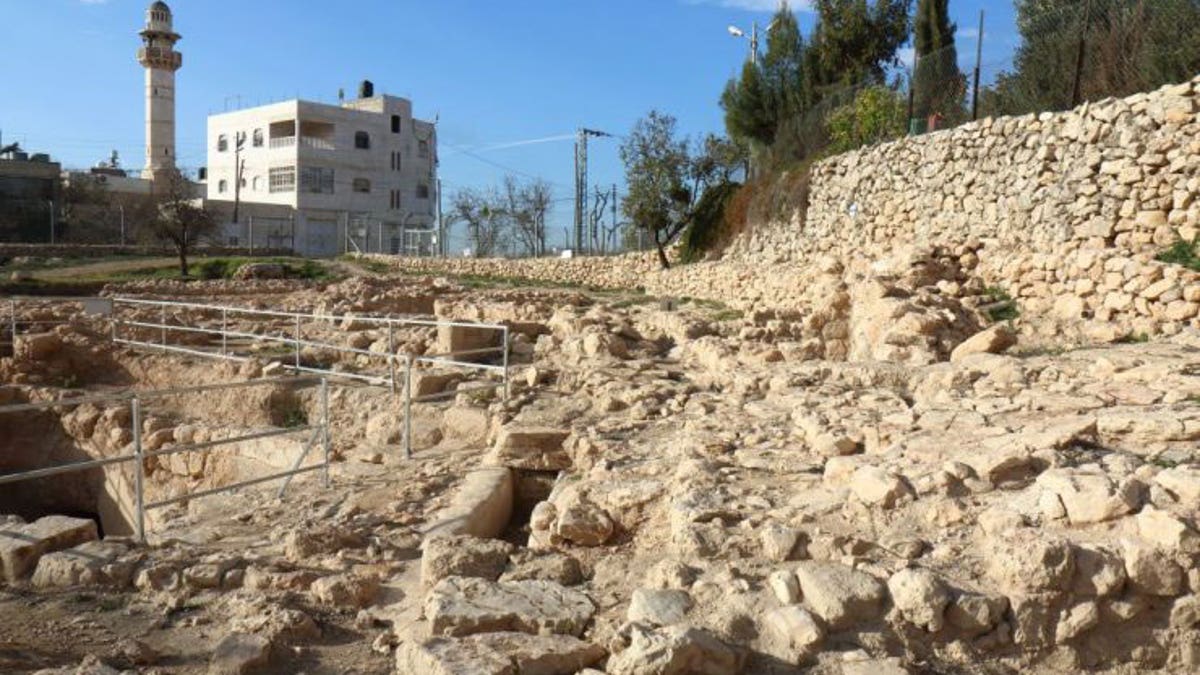
Antiquities of the Jewish community in Hebron. (Hillel Maeir/TPS-IL)
Khan said other sites facing encroachment include Joshua’s Altar, where a new Palestinian neighborhood is being developed nearby, and Joseph’s Tomb, which is largely inaccessible to Jewish Israelis
«I’m disgusted, but not concerned,» Sandra Hagee Parker, Chairwoman of the Christians United for Israel Action Fund, told Fox News Digital in a statement. «Where are the Romans, Ottomans, and Crusaders? The enemies of Israel are remembered only for their ultimate defeat by the God of Abraham and His children.
«Moreover, the grotesque effort to deny the Jewish connection to the Land is a rejection of God Himself,» she continued. «It is both antisemitic and anti-Christian—and it will never succeed. My only concern is that America continues to stand shoulder to shoulder with Israel and her people,» she added.
Ze’ev Orenstein, Director of International Affairs at the Jerusalem-based City of David Foundation, stressed that «from its inception in 1964, the Palestine Liberation Organization—the forerunner of today’s Palestinian Authority—was founded on the denial of thousands of years of Jewish history and heritage rooted in the Land of Israel in general, and in Jerusalem, Judea, and Samaria—the Biblical heartland—in particular.
«This denial,» Orenstein told Fox News Digital, «aimed to delegitimize and undermine the Jewish people’s legal, moral and historical right to sovereignty in the Land of Israel, portraying a people with some of the deepest archaeological ties to the land as occupiers and colonizers.
«For that reason, the Islamic Waqf carried out a campaign of systematic destruction of antiquities atop the Temple Mount in the late 1990s, and Palestinian leadership continues to deny, damage, and destroy Jewish heritage sites throughout Judea and Samaria,» he said.
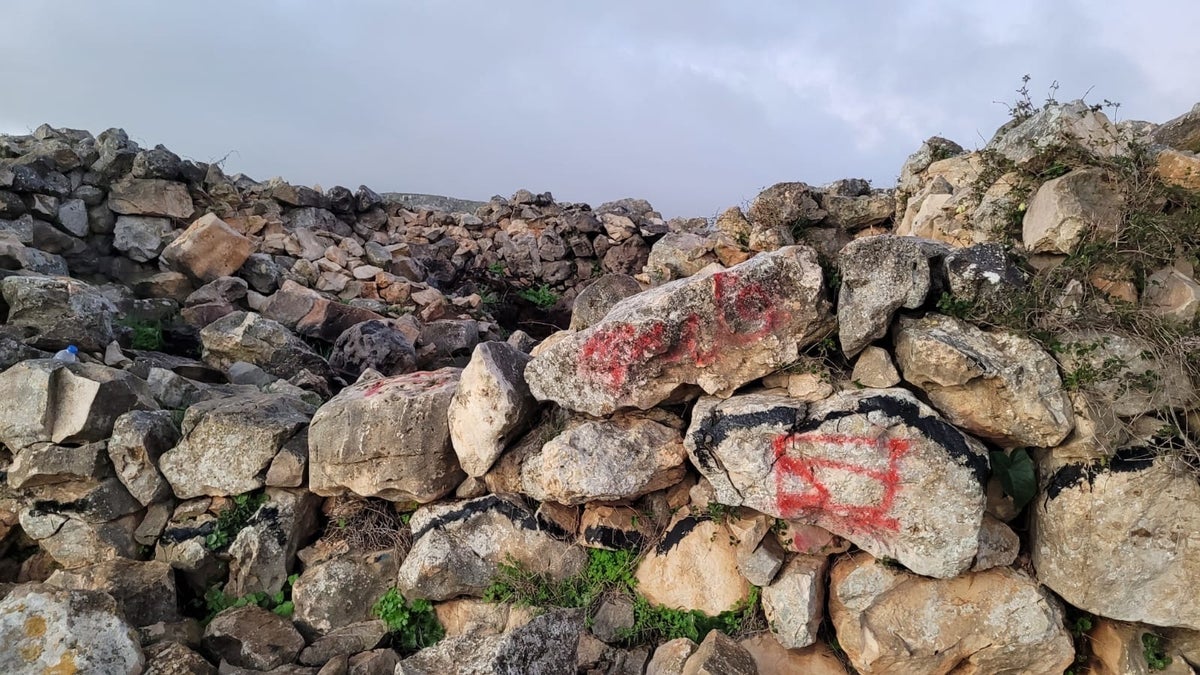
Following the destruction and severe damage by Palestinian rioters at the ‘Joshua Altar’ archeological site located on the spur of Mt. Ebal, dozens of Jewish worshipers arrived for morning prayers at the site. (TPS)
In response, Israeli Prime Minister Benjamin Netanyahu in July 2023 announced a $33 million program to safeguard and rehabilitate archaeological sites in the biblical heartland.
«In every corner of Judea and Samaria, one need only to put spade to ground in order to uncover archaeological finds that attest to our deep roots in the Land of Israel,» Netanyahu said at the time. «This plan will encourage tourism, education and [present] information for these important sites that tell the story of our people in Judea and Samaria.»
Rev. Dr. Petra Heldt, professor at the Jerusalem University College and director of the Ecumenical Theological Research Fraternity in Israel, cited biblical texts and ongoing excavations as proof of longstanding Jewish presence in the region.
«There are hundreds of biblical place names showing Jews lived in Judea and Samaria since the time of Abraham,» Heldt told Fox News Digital. «The Palestinian Authority has tried to erase this evidence, but it’s nearly impossible to eliminate.»
Heldt pointed to Shiloh as a thriving example, with an active kibbutz and archaeological site where new discoveries are regularly unearthed. «Jewish communities are not only living in their ancestral homeland—they’re documenting it. You can see the impact of various layers of occupation over the last hundred years.»
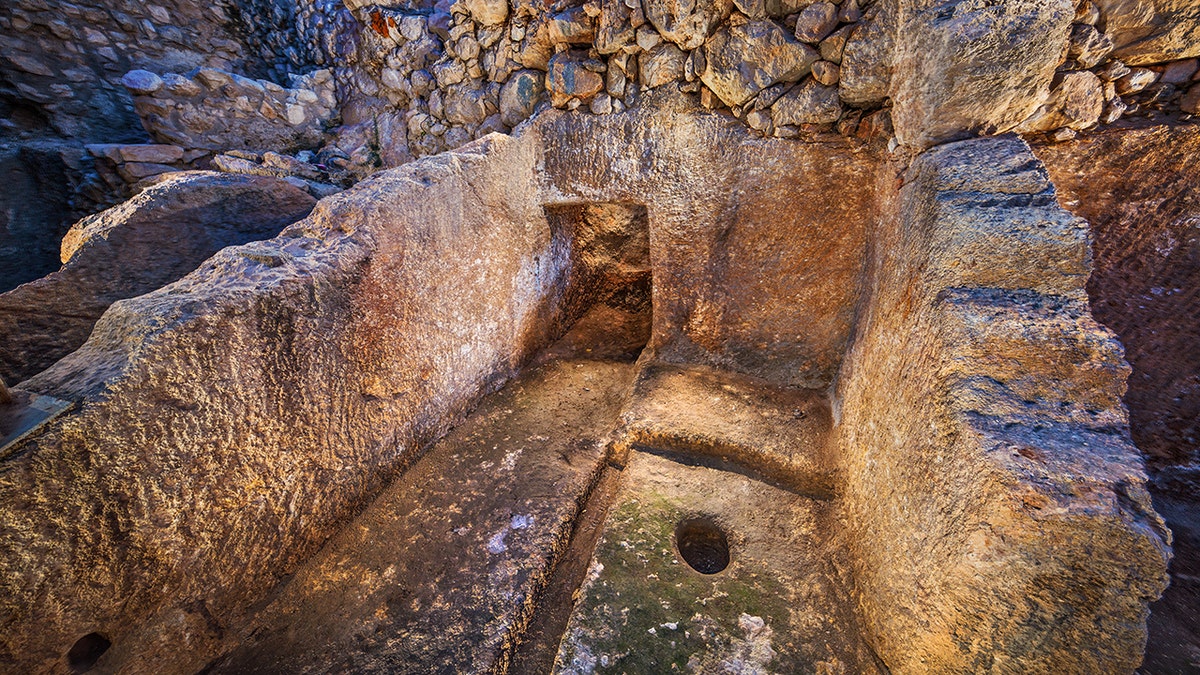
A carved installation identified as an altar, with a channel for liquid drainage. (Credit: Kobi Harati, City of David)
CLICK HERE TO GET THE FOX NEWS APP
According to Heldt, whose organization hosts global lectures and educational programs on archaeological findings in Judea and Samaria, more international support is needed to protect these sites. «We must involve the media, universities, artists, filmmakers and writers to tell these stories and make these places matter globally,» she said.
The struggle to preserve Jewish historical sites in Judea and Samaria is not just about stones or ruins—it’s a battle over narrative, legitimacy and identity, according to the experts.
«The way to fight this is to build, to educate and to assert our sovereignty,» Hebron’s Fleisher said. «That’s how we strengthen our connection to the land and protect the truth of our history.»
INTERNACIONAL
Robo en el Louvre: restos de ADN y un testigo clave se suman al caso
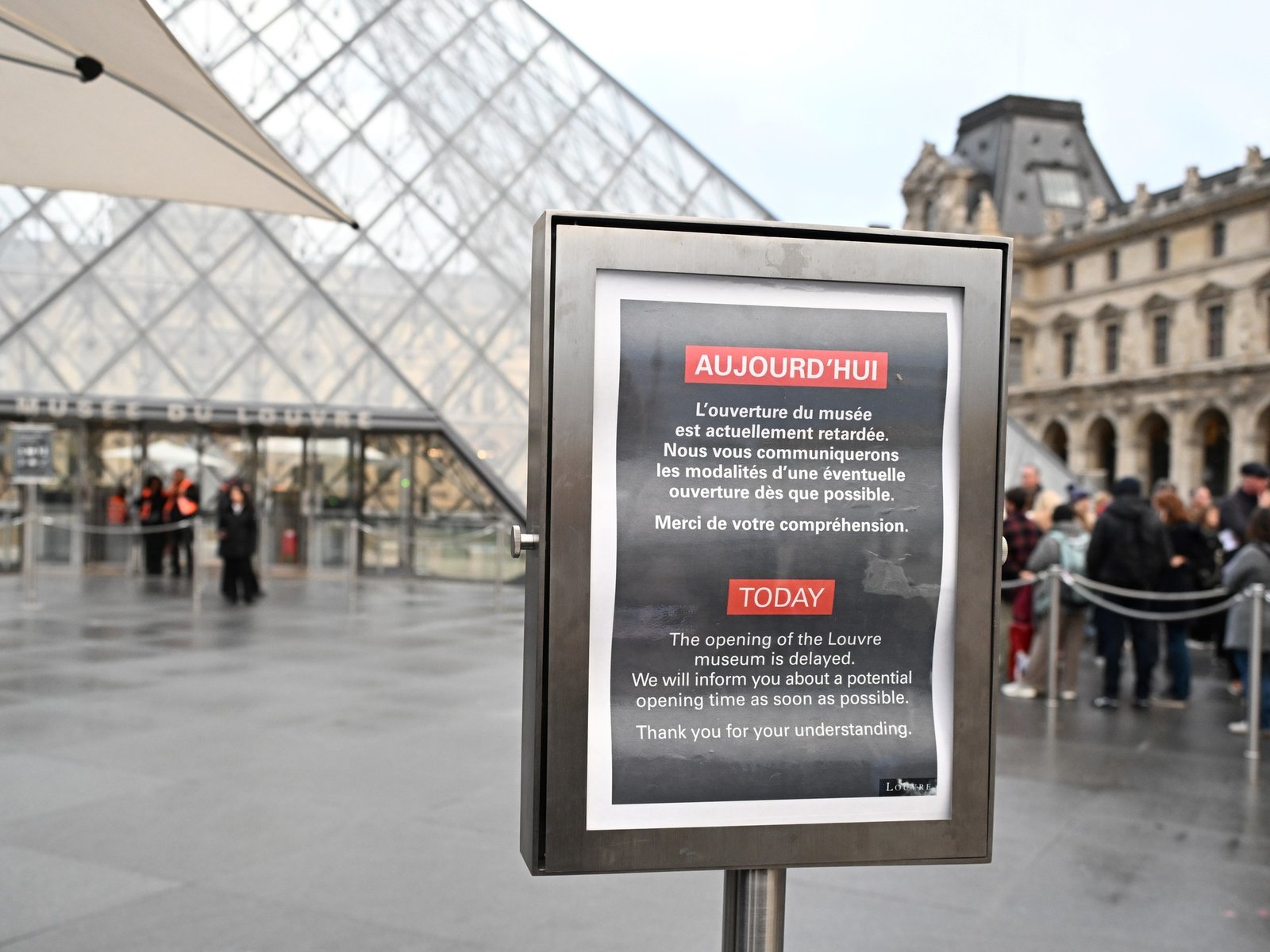
Las ventanas adaptadas
Bandidos internacionales
El montacargas y su dueño
Refuerzan medidas
Museos adaptados al crimen organizado
INTERNACIONAL
Sanae Takaichi becomes Japan’s first female prime minister, citing Thatcher inspiration

NEWYou can now listen to Fox News articles!
As Britain marked the 100th anniversary of Margaret Thatcher’s birth last week, Japan made history of its own on Tuesday by electing its first female prime minister, Sanae Takaichi, a self-declared admirer of the «Iron Lady.»
Takaichi, 64, who has long cited Thatcher as a personal and political inspiration, was chosen by Japan’s ruling Liberal Democratic Party (LDP), during an extraordinary session of the country’s lower house, replacing former Prime Minister Shigeru Ishiba and ending several months of political turbulence that saw the party lose its upper-house majority in July.
In remarks after her election, Takaichi said she felt «the tough work starts here» and promised to restore public confidence and strengthen Japan’s security posture. Over the years, she has praised Thatcher’s «strength and womanly warmth» as qualities she seeks to emulate. In 2013, shortly before Thatcher’s death, Takaichi met her in London — a moment she later described as «life-changing.»
THATCHER CENTENNIAL CELEBRATION EXAMINES HOW REAGAN PARTNERSHIP GUIDES MODERN US-UK RELATIONS
Lawmakers applaud as Sanae Takaichi, standing, was elected as Japan’s new prime minister during the extraordinary session of the lower house, in Tokyo, Japan, Tuesday, Oct. 21, 2025. (Eugene Hoshiko/AP Photo)
Described by some in Japanese and international media as an ultraconservative and hard-line figure, Takaichi backs strengthening Japan’s defense posture, is a noted China hawk, and supports constitutional revision to expand the role of the Self-Defense Forces.
Economically, she praises Abenomics, the policies adopted by former Prime Minister Shinzo Abe, and favors fiscal and monetary stimulus. Abe was Japan’s longest-serving prime minister and was assassinated in 2022 at a campaign rally, two years after leaving office.
«She’s very different from the other people in the Liberal Democratic Party, and that’s why she was selected this time,» said Gordon Chang, author and Asia analyst, in an interview with Fox News Digital. «After losing its upper-house majority, the LDP realized it needed to protect its right flank by electing someone more conservative than in the past — so the Margaret Thatcher comparison does make sense.»
Known for her hawkish stance on China, Takaichi is expected to maintain Japan’s close alignment with the United States. Chang said her election could bolster Washington’s strategic position in Asia, especially as tensions with Beijing remain high.
JAPAN CALLS AXIS OF CHINA, RUSSIA, NORTH KOREA THE ‘GRAVEST THREAT’ TO GLOBAL ORDER SINCE WWII

Left: Newly elected Prime Minister Sanae Takaichi arrives at the Prime Minister’s Office in Tokyo, Japan, Tuesday, Oct. 21, 2025. Right: British Prime Minister Margaret Thatcher attends a British-French meeting with President François Mitterrand in the United Kingdom, May 5, 1990. (AP Photo/Eugene Hoshiko/Photo by Georges De Keerle/Getty Images)
«She’s a hawk on China, and that’s exactly what’s needed right now,» Chang said. «That’s not going to upset President Trump — if anything, it strengthens his hand in dealing with Xi Jinping. It shows America’s alliances are strong and getting stronger.»
Takaichi’s rise has been hailed as a milestone for female representation, though Chang emphasized that her selection was driven more by ideology than identity.
«I don’t think she was chosen because she was a woman,» he said. «She was chosen because the party needed to shore up its right flank — and it just so happened that the most conservative of the possible candidates was a woman.»
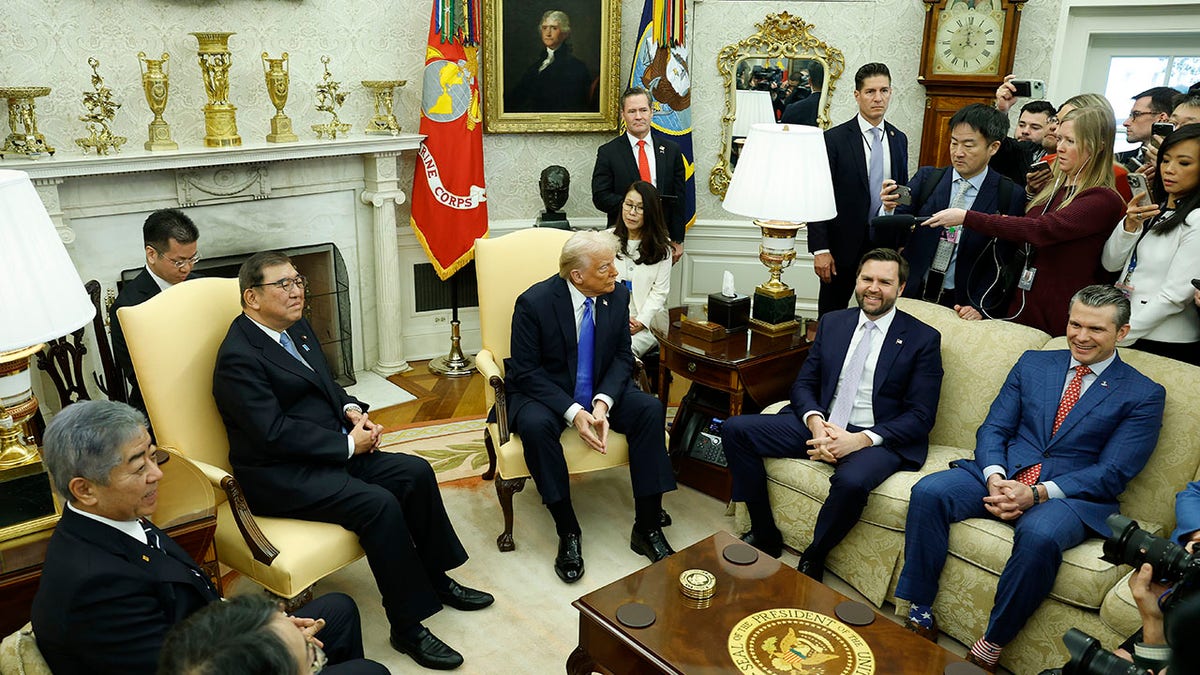
U.S. President Donald Trump (L), Vice President JD Vance (C) and Secretary of Defense Pete Hegseth participate in a meeting with then Japanese Prime Minister Shigeru Ishiba in the Oval Office of the White House on Feb. 7, 2025, in Washington, DC. Shigeru, who took office in October, was the first Asian leader to visit Trump since he returned to the White House. (Anna Moneymaker/Getty Images)
Even as she breaks barriers herself, Takaichi’s record underscores her conservative social vision. She is among the Japanese politicians who have resisted measures to advance women’s rights, supports the imperial family’s male-only succession, and opposes same-sex marriage as well as allowing separate surnames for married couples.
Like Thatcher, Takaichi rose from outside her country’s political elite. Her mother served in the Nara Prefectural Police, and her father worked for a Toyota-affiliated car company.
CLICK HERE TO GET THE FOX NEWS APP
Analysts say she now faces the challenge of turning symbolism into substance. Her nationalist positions could heighten friction with China, while her expansive spending plans for the world’s fourth-largest economy will be closely watched by international investors. At the same time, she must prepare to host President Donald Trump, who is expected to visit Japan next week.
Reuters and the Associated Press contributed to this report.
japan,asia world regions,united kingdom,donald trump
INTERNACIONAL
Hillary Clinton fires up voters against Trump’s White House ballroom construction: ‘Not his house»
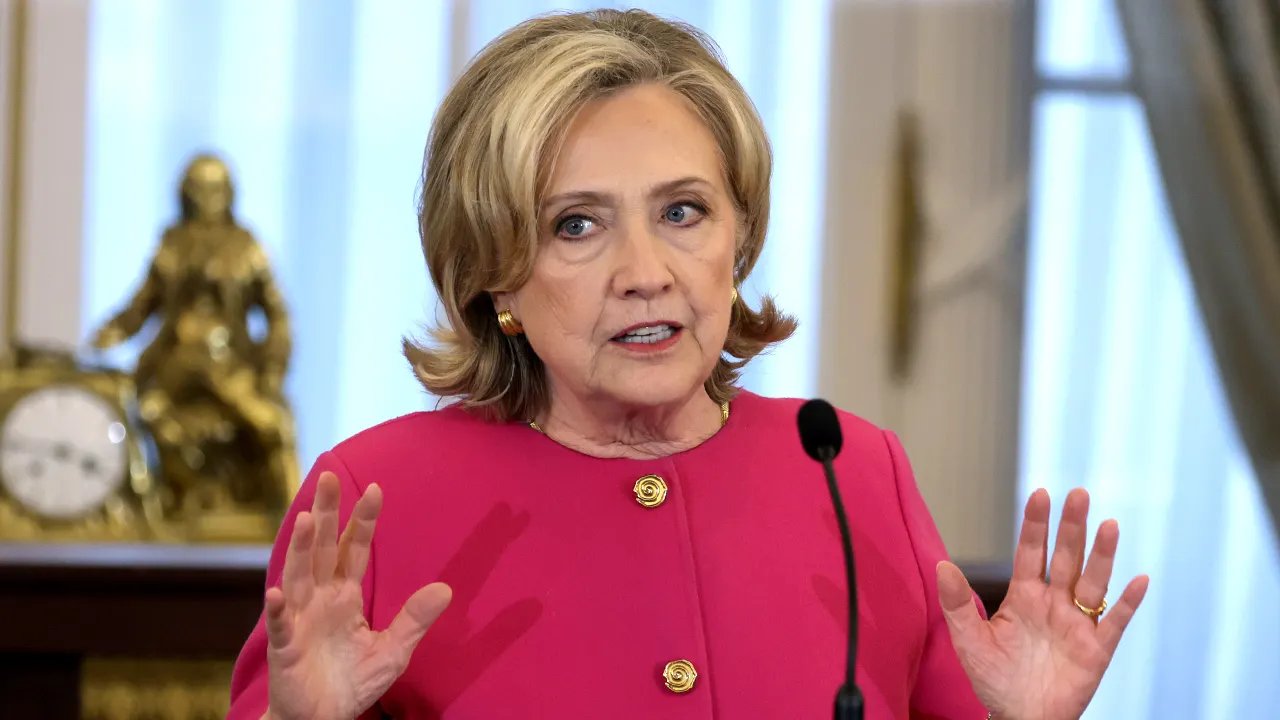
NEWYou can now listen to Fox News articles!
Former Secretary of State Hillary Clinton recently made it known she is no fan of President Donald Trump’s project to construct a ballroom at the White House in an appeal to voters, telling them that 1600 Pennsylvania Ave. is their «house.»
«It’s not his house,» Clinton wrote on X Tuesday morning. «It’s your house. And he’s destroying it.»
The social media post included a screenshot of The Washington Post’s report, «White House begins demolishing East Wing Facade to build Trump’s ballroom,» accompanied by a photo of a demolition crew.
«President Trump is working 24/7 to Make America Great Again, including his historic beautification of the White House, at no taxpayer expense,» White House spokesman Davis Ingle told Fox News Digital when asked about Clinton’s post and other Democrats criticizing the ballroom construction. «These long-needed upgrades will benefit generations of future presidents and American visitors to the People’s House.»
TRUMP BREAKS GROUND ON MASSIVE WHITE HOUSE BALLROOM PROJECT WITH PRIVATE FUNDING FROM ‘PATRIOTS’
Former Secretary of State Hillary Clinton recently made it known she is no fan of President Donald Trump’s project to construct a ballroom at the White House. (Alex Wong/Getty Images)
Trump announced Monday that construction had begun on the ballroom, following months of the president floating the planned project to modernize the White House. The project does not cost taxpayers and is privately funded, the White House reported.
«I am pleased to announce that ground has been broken on the White House grounds to build the new, big, beautiful White House Ballroom,» Trump said on Truth Social. «Completely separate from the White House itself, the East Wing is being fully modernized as part of this process, and will be more beautiful than ever when it is complete!»
«For more than 150 years, every President has dreamt about having a Ballroom at the White House to accommodate people for grand parties, State Visits, etc. I am honored to be the first President to finally get this much-needed project underway — with zero cost to the American Taxpayer!» he continued. «The White House Ballroom is being privately funded by many generous Patriots, Great American Companies, and, yours truly. This Ballroom will be happily used for Generations to come!»
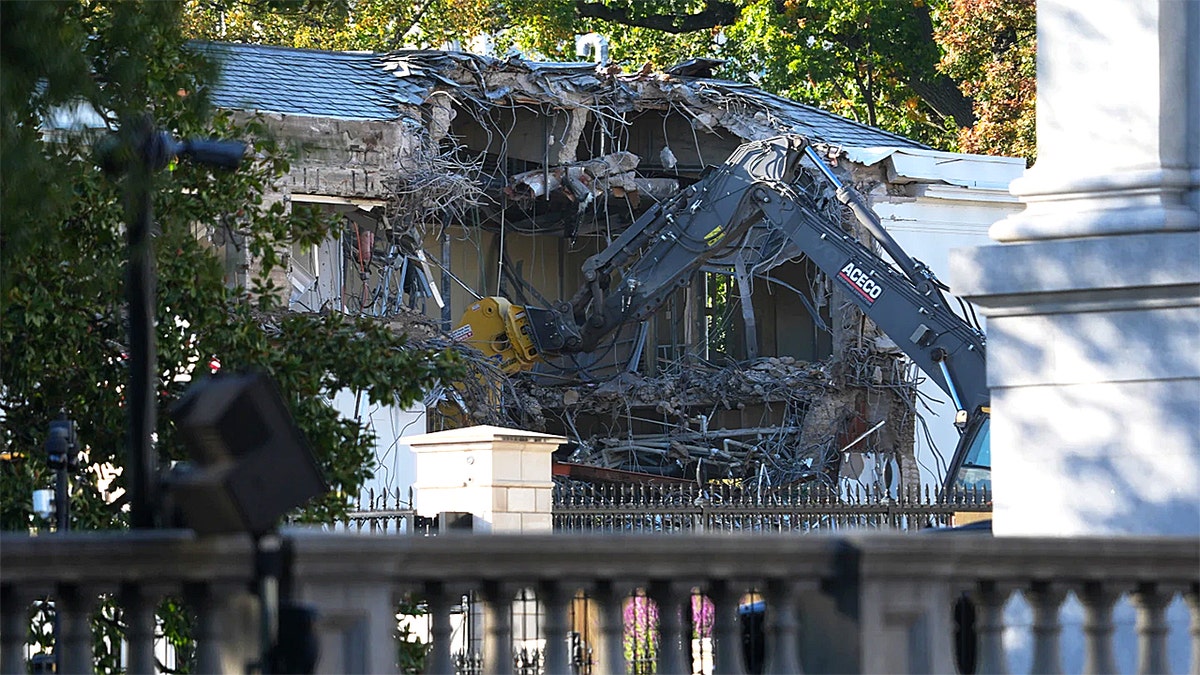
The White House has started tearing down part of the East Wing to build the ballroom President Donald Trump wants to be added to the building. (The Associated Press)
The privately funded project will cost an estimated $200 million, White House press secretary Karoline Leavitt told the media in July. The 90,000-square-foot ballroom will accommodate approximately 650 seated guests, according to the White House.
«The White House is currently unable to host major functions honoring world leaders in other countries without having to install a large and unsightly tent approximately 100 yards away from the main building’s entrance,» Leavitt said back in July, adding the new ballroom will be «a much needed and exquisite addition.»
FETTERMAN DEFENDS TRUMP’S ‘TASTEFUL’ $200M WHITE HOUSE BALLROOM MAKEOVER AMID DEM CRITICISM
Other Democrats also have slammed the construction project, including New Jersey Sen. Andy Kim calling it «disgusting.»

President Donald Trump arrives at an election night watch party at the Palm Beach Convention Center, Wednesday, Nov. 6, 2024, in West Palm Beach, Fla. (Evan Vucci/The Associated Press)
«I wanted to share this photo of my family standing by a historic part of the White House that was just torn down today by Trump,» Kim posted to X on Monday. «We didn’t need a billionaire-funded ballroom to celebrate America. Disgusting what Trump is doing.»
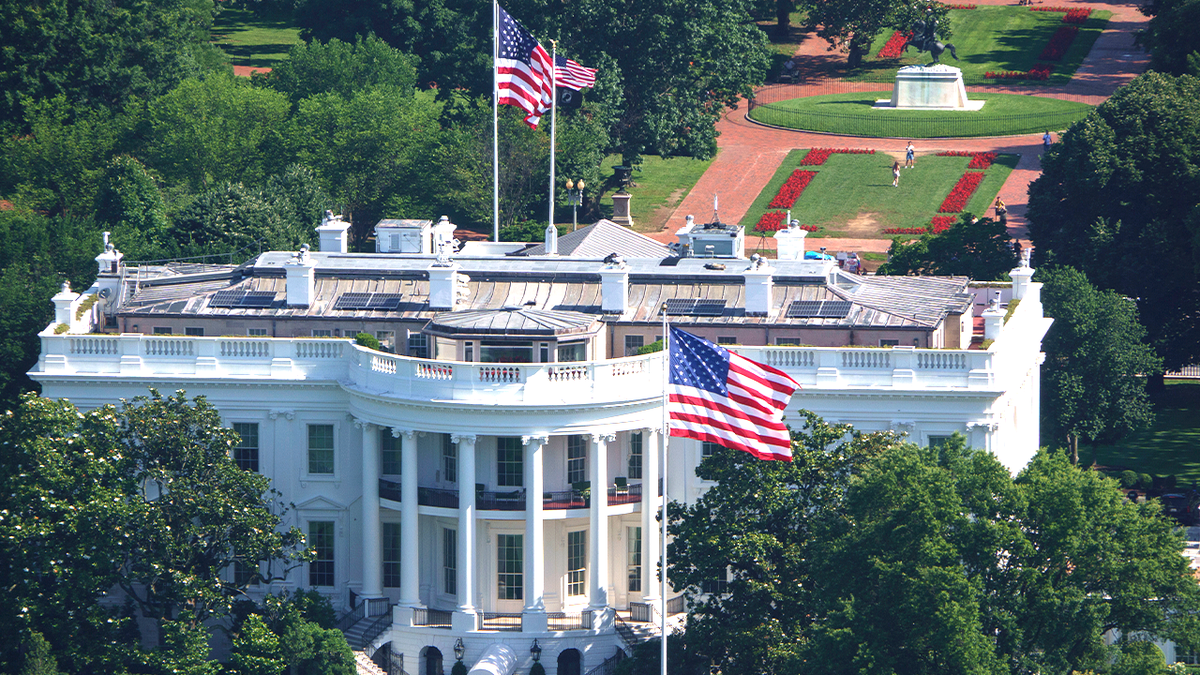
Trump first announced he would have two massive flag poles installed on the White House (Getty Images)
«Oh you’re trying to say the cost of living is skyrocketing? Donald Trump can’t hear you over the sound of bulldozers demolishing a wing of the White House to build a new grand ballroom,» Massachusetts Sen. Elizabeth Warren posted to X on Monday.
CHICAGO RESIDENTS CALL OBAMA PRESIDENTIAL CENTER A ‘MONSTROSITY,’ FEAR THEY’LL BE DISPLACED: REPORT
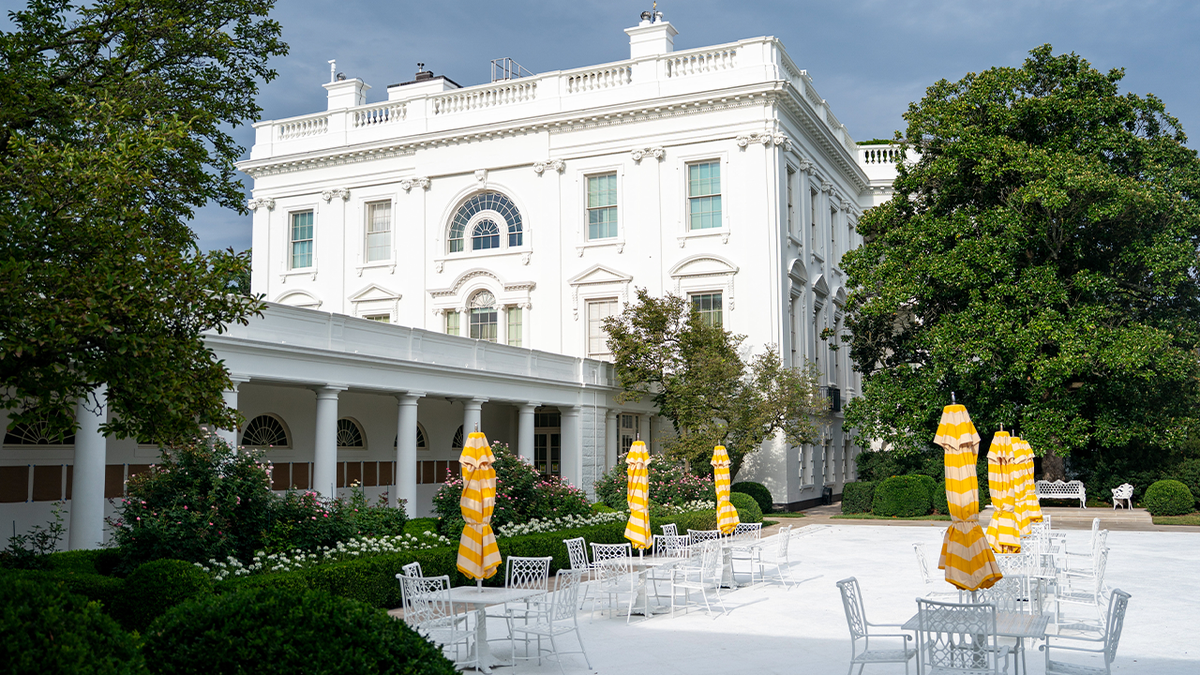
Tables and chairs in the Rose Garden of the White House in Washington, DC, US, on Friday, Aug. 8, 2025. Trump ordered updates to the Rose Garden in March. (Getty Images)
«Republican math. Can afford: Trump ballroom, $40 Billion Argentina bailout, massive tax cuts for millionaires and billionaires Can’t afford: health care for Americans, SNAP for struggling Americans, tax relief for middle class families,» Pennsylvania state Rep. Malcolm Kenyatta posted to X.
CLICK HERE TO GET THE FOX NEWS APP
The ballroom construction follows Trump installing two massive 88-foot-tall American flags on either side of the White House this summer in a patriotic endeavor that did not cost U.S. taxpayers a cent, as well as an overhaul to the White House Rose Garden.
Fox News Digital’s Greg Wehner contributed to this article.
donald trump,white house,hillary clinton

 CHIMENTOS3 días ago
CHIMENTOS3 días agoLa fuerte actitud de Manu Urcera con Indiana Cubero que reveló la verdad de la interna familiar: “El saludo del piloto a la hija de Nicole Neumann por su cumpleaños”

 CHIMENTOS2 días ago
CHIMENTOS2 días agoLa cruda confesión del Turco Naim a 1 año de la separación de Emilia Attias: «Me di cuenta que hay que aprender a estar solo»

 POLITICA3 días ago
POLITICA3 días ago“El Pollo” Carvajal revela cómo Chávez pagaba a Kirchner, Lula y Petro con dinero del narcotráfico














